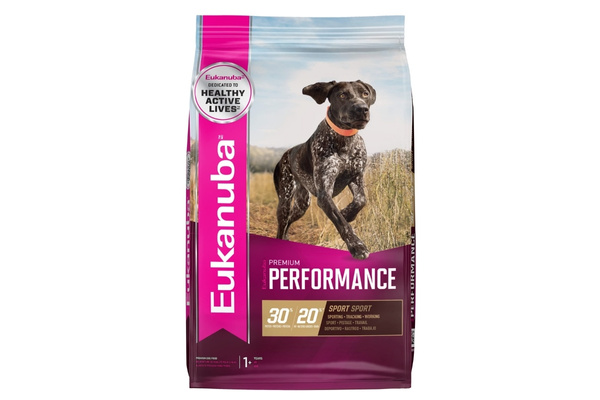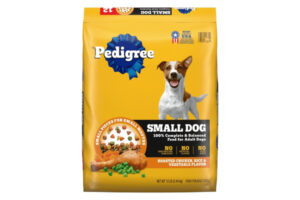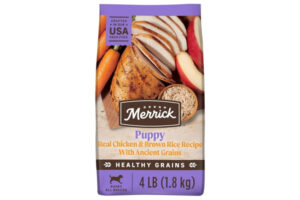Eukanuba has been a fixture in premium dog nutrition since 1969, when founder Paul Iams set out to create something that would truly live up to its jazz-era name meaning “the tops.” After decades under Procter & Gamble’s wing, the brand found its current home with Mars Petcare in 2014, where it continues to position itself as a science-driven option for dog owners who want research-backed nutrition without breaking into the ultra-premium price tier.
What strikes me most about Eukanuba is how it bridges the gap between accessible premium nutrition and serious scientific backing. The brand has maintained partnerships with organizations like Canine Companions for over 30 years, giving them real-world data on how their formulations perform with working dogs under demanding conditions. It’s this kind of practical research foundation that sets them apart from brands that rely purely on marketing claims.
What Eukanuba Represents in Today’s Market
Brand Heritage and Core Philosophy
Eukanuba’s foundation rests on what they call “nutritional excellence through science,” and honestly, they’ve got the track record to back it up. The brand emerged during a pivotal time in pet nutrition when the industry was shifting from basic sustenance to targeted nutritional support. Paul Iams wasn’t just creating another dog food—he was establishing a new standard for what premium pet nutrition could look like.
The company’s core values center around life-stage nutrition, breed-specific formulations, and digestive health optimization. What I appreciate is how these aren’t just marketing buzzwords for Eukanuba—they actually develop different formulas for puppies, adults, seniors, and various breed sizes, recognizing that a Chihuahua puppy has vastly different nutritional needs than a senior Great Dane.
Market Position and Reputation
In today’s crowded premium pet food landscape, Eukanuba occupies what I’d call the “accessible premium” space. They’re positioned above mainstream brands like Pedigree or Beneful, but below ultra-premium options like Orijen or Acana. This positioning makes them attractive to dog owners who want quality nutrition without the sticker shock of the highest-tier brands.
Their reputation within the veterinary community is generally solid, though not as universally praised as brands like Hill’s Science Diet or Royal Canin. What works in their favor is their consistent quality control and transparent nutritional information. What occasionally works against them are the periodic recalls that have affected the brand over the years.
Breaking Down Eukanuba’s Ingredients
Primary Protein Sources
Most Eukanuba formulations lead with chicken as the first ingredient, which is exactly what you want to see in a quality dog food. Real, named meat as the primary component tells you they’re prioritizing animal protein over cheaper fillers. However, the second or third ingredient is often chicken by-product meal, which is where things get a bit more complex.
Chicken by-product meal isn’t inherently bad—it’s actually a concentrated protein source that includes organs like liver, kidneys, and lungs. These are nutritious parts that dogs would naturally consume in the wild. What concerns me slightly is that by-product meal can vary in quality between batches, and Eukanuba doesn’t provide much transparency about their specific sourcing standards for these ingredients.
Carbohydrate and Filler Analysis
Here’s where I have some mixed feelings about Eukanuba’s approach. The brand relies heavily on corn, wheat, and grain sorghum as primary carbohydrate sources. These aren’t necessarily harmful ingredients, but they’re also not the most optimal choices for every dog. Corn and wheat are common allergens, and while grain sorghum is more digestible, it’s still primarily a cost-effective energy source rather than a nutritionally superior one.
The inclusion of dried beet pulp is actually a positive—it’s an excellent fiber source that supports digestive health and helps produce firm stools. I also appreciate that they include fructooligosaccharides as a prebiotic, which supports beneficial gut bacteria.
Functional Ingredients and Supplements
Eukanuba does well with their functional ingredient additions. They include fish oil for omega-3 fatty acids, which supports coat health and cognitive function. The addition of glucosamine and chondroitin for joint support is particularly valuable for large breed dogs.
What I find less impressive is their mineral supplementation. The minerals appear to be in basic forms rather than chelated versions, which could affect absorption rates. For a premium brand, I’d expect to see more bioavailable mineral forms.
Nutritional Profile and Standards Compliance
Macronutrient Balance
Eukanuba’s nutritional profile shows protein levels averaging around 30% across their product line, with fat content typically around 17%. These numbers put them in the middle range for premium dry dog foods—not exceptionally high, but certainly adequate for most dogs’ needs.
The estimated carbohydrate content of approximately 40% is higher than I’d prefer to see in a premium food. While dogs can certainly thrive on higher carbohydrate diets, those carbs should ideally come from more digestible, nutrient-dense sources than corn and wheat.
AAFCO Compliance and Life Stage Appropriateness
All Eukanuba products meet AAFCO standards for their intended life stages, which is the baseline requirement for any commercial dog food. What’s more impressive is their approach to life-stage specific formulations—they don’t just make one “all life stages” formula and call it a day.
Their puppy formulas contain higher protein and fat levels to support growth, while their senior formulations are adjusted for the changing metabolism and activity levels of older dogs. This targeted approach shows genuine understanding of canine nutritional needs throughout different life phases.
Who Should Consider Eukanuba
Best Suited For
Eukanuba works particularly well for adult dogs with no specific dietary sensitivities whose owners want a step up from mainstream brands without the premium price tag of ultra-high-end options. I’d especially recommend it for:
• Large breed dogs who can benefit from the joint support ingredients
• Active adult dogs who need consistent energy from quality protein sources
• Households with multiple dogs where cost-effectiveness matters
• Dog owners who prefer brands with established research backing
Dogs That Might Need Different Options
I’d hesitate to recommend Eukanuba for dogs with grain sensitivities or allergies, given the prominent use of corn and wheat. Dogs with particularly sensitive stomachs might also struggle with the by-product meal content, though this varies significantly between individual dogs.
If you’re dealing with a dog who has chronic digestive issues or specific health conditions, you’d likely be better served by a more specialized diet or a prescription formula from brands like Hill’s or Royal Canin.
Palatability and Real-World Feeding Experience
Taste Acceptance and Kibble Characteristics
Most dogs seem to find Eukanuba quite palatable, which makes sense given the chicken fat and natural flavoring they include. The kibble size varies by formula, with breed-specific sizing that generally works well for the intended dog sizes.
One practical consideration I’ve noticed is that the kibble tends to be fairly dense, which some dogs prefer while others find it less appealing than lighter, more aerated kibbles. The oil content gives it a slightly greasy feel, which isn’t necessarily bad but is worth noting if you’re particular about handling your dog’s food.
Feeding Transitions and Digestive Response
Eukanuba generally transitions well from other premium brands, though the grain content can cause some initial digestive adjustment in dogs coming from grain-free diets. The prebiotic inclusion does seem to help with digestive stability once dogs adjust to the formula.
Cost Analysis and Value Proposition
Price Point Reality Check
Let’s be honest about the costs here. Eukanuba isn’t cheap, but it’s not outrageously expensive either. You’re looking at roughly $2-4 per day for feeding a medium-sized dog, depending on the specific formula and where you shop. For a large dog, expect to spend $4-6 daily.
When I compare this to competitors, it’s generally less expensive than Royal Canin or Hill’s Science Diet, but more costly than Purina Pro Plan. The question becomes whether the quality justifies the price premium over more affordable options.
Value Assessment
Here’s where I have mixed feelings. The research backing and quality control measures justify some price premium, but I’m not convinced Eukanuba offers dramatically better nutrition than well-formulated options that cost 20-30% less. The convenience of widespread availability and consistent quality do add value for many dog owners, though.
If you’re comparing Eukanuba to other brands in a similar price range, I’d suggest looking at Castor & Pollux dog food, which offers organic ingredients and higher protein content at comparable pricing.
Manufacturing Standards and Quality Control
Production Facilities and Processes
Eukanuba’s manufacturing standards are generally solid, with facilities that implement comprehensive quality testing. They conduct 120 individual tests on food batches, which exceeds USDA requirements and demonstrates serious commitment to quality control.
The new $390 million facility in Lewisburg, Ohio, represents significant investment in modern manufacturing capabilities. This LEED-certified facility incorporates sustainability features and advanced production technology that should support consistent quality moving forward.
Safety Record Considerations
I have to address the elephant in the room here—Eukanuba has experienced several recalls over the years, including salmonella contamination incidents in 2013, 2010, and 2007. While the company has handled these recalls appropriately and transparently, the pattern suggests ongoing challenges with contamination control.
This doesn’t necessarily make Eukanuba unsafe, but it’s something to be aware of. The batch tracking systems enable rapid identification and removal of affected products, which is reassuring from a consumer safety perspective.
Environmental Impact and Corporate Responsibility
Sustainability Initiatives
Under Mars ownership, Eukanuba has access to comprehensive sustainability programs that address energy efficiency, waste reduction, and responsible sourcing. The new manufacturing facility incorporates LEED certification standards and energy-efficient design elements.
However, the reliance on conventional agriculture for primary ingredients means the environmental footprint is still significant. Local sourcing of Ohio-grown corn and soybeans helps reduce transportation impacts, but the overall sustainability profile isn’t as strong as brands emphasizing regenerative agriculture or novel protein sources.
My Shelter Experience with Eukanuba
Working at the local animal shelter gives me opportunities to test various foods with dogs who have different backgrounds and needs. I decided to try Eukanuba Adult Large Breed with Ranger, a three-year-old German Shepherd mix who came to us after his elderly owner couldn’t care for him anymore. Ranger didn’t have any specific health issues, but he’d been on a basic grocery store brand his whole life, and we wanted to see how he’d respond to better nutrition while he waited for adoption.
The transition went smoothly—Ranger took to the Eukanuba immediately without any digestive upset, which was encouraging since shelter dogs often have sensitive stomachs from stress and diet changes. What I noticed most was his enthusiasm at mealtime. This was a dog who had been picking at his previous food, but with Eukanuba, he cleaned his bowl consistently.
Over the six weeks Ranger was with us, his coat definitely improved in shine and softness. His stools became more consistent and smaller in volume, which made cleanup easier—always a practical consideration in shelter settings. His energy level seemed more stable throughout the day, though it’s hard to say how much of that was the food versus just settling into shelter routine.
The most noticeable change was actually his reduced food guarding behavior. Initially, Ranger was quite protective around his food bowl, but as he became more satisfied with his meals, this behavior diminished significantly. Whether that was the food quality or just trust-building is hard to say, but the timing was notable.
What Other Dog Owners Report
Long-Term User Experiences
Talking to dog owners who’ve used Eukanuba for extended periods, the feedback is generally positive but not overwhelmingly enthusiastic. Most report steady health maintenance rather than dramatic improvements. Dogs tend to maintain good coat condition, stable weight, and regular digestive function.
The most common complaint I hear is about cost creep over time. Many owners start with Eukanuba and find it works well, but as prices increase, they eventually switch to more affordable alternatives. Interestingly, most report that their dogs transition to other premium brands without significant issues, suggesting Eukanuba doesn’t create dependency.
Common Concerns and Praise
Owners consistently praise Eukanuba for palatability and consistency. Dogs seem to enjoy the taste, and the quality remains stable from bag to bag. The widespread availability is another frequently mentioned benefit—you can find Eukanuba at most pet stores, which is convenient for busy dog owners.
On the concern side, some owners report their dogs developed sensitivities to the grain content over time, requiring switches to grain-free alternatives. A few have mentioned increased tear staining in lighter-colored dogs, though this could be coincidental.
Competitive Landscape Analysis
How Eukanuba Stacks Up
When I compare Eukanuba to direct competitors, it occupies a middle ground that’s both its strength and weakness. Against Purina Pro Plan, Eukanuba offers more specialized formulations but at higher cost. Against Royal Canin, it’s more affordable but with less veterinary focus.
The brand’s biggest advantage over competitors is probably its combination of research backing and accessibility. You’re not going to find more scientifically advanced nutrition in the same price range, but you’ll also not find dramatically better ingredients than brands costing significantly less.
Where Eukanuba Falls Short
Compared to newer premium brands, Eukanuba’s ingredient list can look dated. The heavy reliance on corn and wheat, plus the use of by-product meals, feels less appealing than the whole prey or limited ingredient approaches of contemporary premium brands.
The recall history also puts Eukanuba at a disadvantage compared to brands with cleaner safety records. While recalls can happen to any manufacturer, the pattern is concerning for a premium brand.
Suitability Assessment
Based on my analysis, Eukanuba works best for healthy adult dogs without specific dietary sensitivities whose owners want reliable, research-backed nutrition at a moderate premium price. It’s particularly suitable for:
**Large breed dogs** who can benefit from the joint support ingredients and controlled calcium levels for proper growth. The breed-specific sizing also works well for larger mouths and digestive systems.
**Multi-dog households** where cost-effectiveness matters but quality can’t be compromised. Eukanuba offers a good balance of nutrition and affordability when feeding multiple dogs.
**Dog owners who prefer established brands** with long track records and scientific backing. If you’re someone who values research and veterinary input over trendy ingredients, Eukanuba aligns with those priorities.
**Active adult dogs** with normal energy requirements. The protein and fat levels support active lifestyles without being excessive for average activity levels.
However, I’d recommend looking elsewhere if you’re dealing with dogs that have grain sensitivities, require limited ingredient diets, or have chronic digestive issues that need more specialized nutrition.
My Final Assessment
Here’s my honest take on Eukanuba: it’s a solid, middle-of-the-road premium dog food that does what it claims to do without being exceptional in any particular area. The research backing is legitimate, the quality control is generally good, and most dogs thrive on it. But it’s also not particularly innovative or exciting compared to what else is available today.
Would I buy this for my own dog? If I had a healthy adult dog without specific dietary needs and wanted something reliable and widely available, yes. Eukanuba represents safe, predictable nutrition that won’t cause problems for most dogs. But if I were looking for optimal nutrition or had a dog with any special requirements, I’d probably spend my money elsewhere.
The biggest issue I have with Eukanuba is that it feels like it’s coasting on its reputation rather than pushing boundaries. The ingredient list hasn’t evolved much with current nutrition science, and while there’s nothing wrong with corn and wheat for most dogs, there are more optimal carbohydrate sources available.
For dog owners who prioritize convenience, consistency, and moderate pricing over cutting-edge nutrition, Eukanuba is a reasonable choice. Just don’t expect it to be transformative for your dog’s health—it’s maintenance nutrition done competently, not optimization nutrition done exceptionally.
If you’re considering Eukanuba but want to explore other options in a similar price range, I’d suggest also looking at Purina Pro Plan for better value or upgrading to something like Nom Nom fresh dog food if your budget allows for a more significant nutritional upgrade.
Find the Perfect Food for Your Dog
Every dog is unique, and so are their nutritional needs. While Eukanuba might work well for some dogs, it might not be the optimal choice for yours. Factors like age, breed, activity level, health conditions, and even individual preferences all play a role in determining the best diet.
That’s why we’ve created a comprehensive questionnaire that takes all these factors into account. By answering a few quick questions about your dog, you’ll receive personalized recommendations for the three best dog food brands specifically selected for your pet’s unique needs. The process takes less than a minute and is completely free.
Rather than guessing which food might work best, you can make an informed decision based on your dog’s specific requirements. You can access our questionnaire via this link and get tailored recommendations that take the guesswork out of choosing the right nutrition for your furry friend.
Frequently Asked Questions
Is Eukanuba good for dogs with sensitive stomachs?
Eukanuba may not be the best choice for dogs with sensitive stomachs. The brand uses corn, wheat, and chicken by-product meal as primary ingredients, which can trigger sensitivities in some dogs. While the inclusion of prebiotics and beet pulp supports digestive health, dogs with chronic digestive issues would likely benefit more from a limited ingredient diet or prescription formula specifically designed for sensitive digestion.
How does Eukanuba compare to Royal Canin and Hill’s Science Diet?
Eukanuba sits in the middle ground between these competitors. It’s generally less expensive than both Royal Canin and Hill’s Science Diet but offers less veterinary focus and specialized formulations. While all three brands meet AAFCO standards and have research backing, Royal Canin and Hill’s have stronger reputations in the veterinary community and more targeted therapeutic diets. Eukanuba’s advantage is better affordability while still maintaining quality ingredients.
Can puppies eat Eukanuba adult dog food?
No, puppies should not eat Eukanuba adult formulas. Puppies have significantly higher protein, fat, and calorie requirements than adult dogs to support proper growth and development. Eukanuba makes specific puppy formulations with appropriate nutrient levels for growing dogs. Feeding adult food to puppies can result in nutritional deficiencies that may impact their development and long-term health.
Why does Eukanuba use corn and wheat if they’re considered fillers?
While corn and wheat are often labeled as “fillers,” they’re actually digestible carbohydrate sources that provide energy for dogs. Eukanuba uses these ingredients because they’re cost-effective and most dogs can digest them without issues. However, they’re not optimal choices for every dog, particularly those with grain sensitivities. The brand prioritizes affordability and widespread palatability over using more premium carbohydrate sources like sweet potatoes or peas.
How long does it take to see improvements when switching to Eukanuba?
Most dogs show initial improvements within 2-4 weeks of switching to Eukanuba. Coat shine and digestive regularity typically improve first, often within the first two weeks. Energy levels and overall condition may take 4-6 weeks to optimize as your dog fully adjusts to the new nutrition. However, Eukanuba is designed more for maintenance than dramatic transformation, so changes are usually gradual rather than dramatic compared to switching from a low-quality food.






